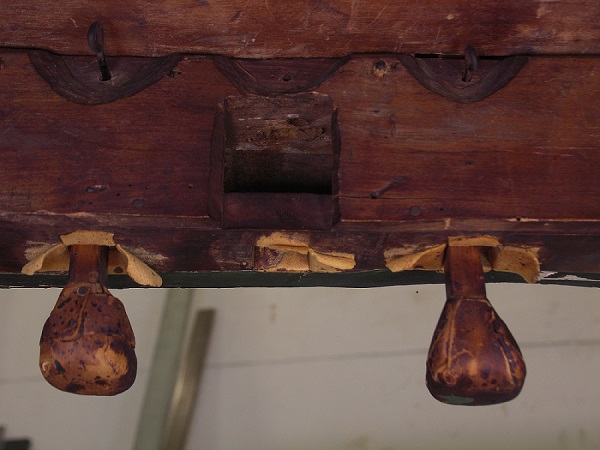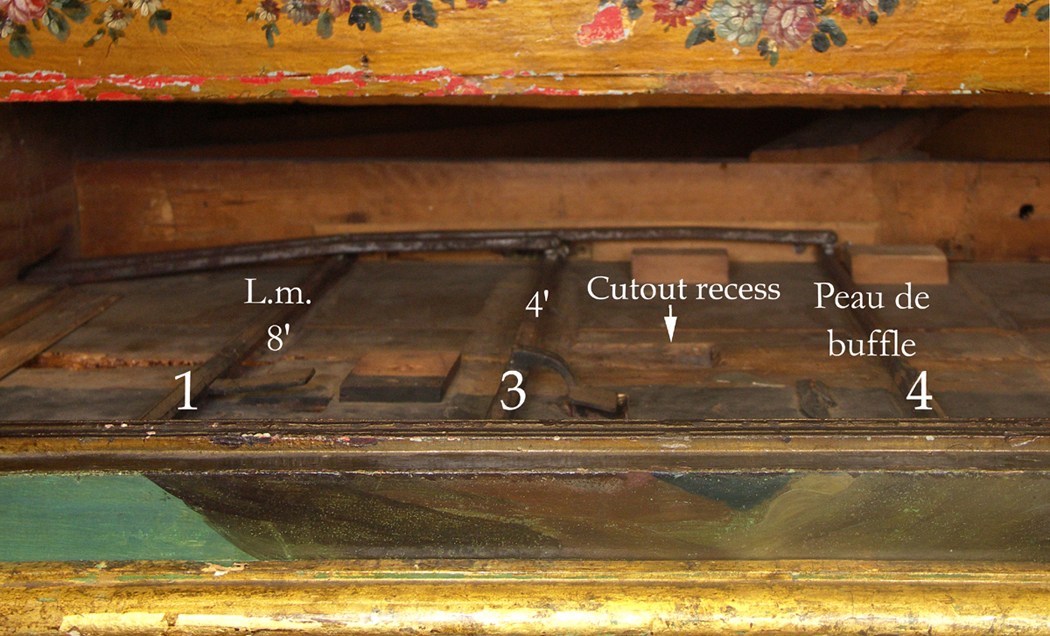A typical genouillère system for changing the registration in the De De Ban double-manual harpsichord, Paris, 1770,
Private Collection, France


A double-manual harpsichord by Jean Mari De De Ban, 1770, Paris, with a typical genouillère added by Joachim Swanen in about 1785.
Like most instruments with a genouillère, this harpsichord by Jean Mari De De Ban has an external system of rocker bars that transfers the motion of the internal register cranks operated by the knee pommels (seen here in the right-hand photograph) through the rocker bars on the spine side to the registers (seen at the top of the left-hand photograph). The Franco-Flemish harpsichord is probably unique in having had a genouillère installed in 1786, but in not having any external register cranks on the spine side of the instrument. Instead the motion of the internal rockers bars must have been transferred from the knee levers to the registers by some kind of system that was contained entirely inside the keywell of the instrument. Unfortunately no instrument seems to have survived with the Barberini/Hoffman-style of genouillère.
The knee pommels would, however, probably have been similar to those seen here in the photograph in the right.

The usual French 18th-century genouillère trapwork mechanism in the
1770 double-manual harpsichord by Jean-Marie De De Ban, Paris
Private Collection, France
This photograph shows the usual internal trapwork mechanism for the genouillère in the 1777 double-manual harpsichord by Jean-Marie De De Ban. This is typical of the type of genouillère used by Taskin, Hemsch and others during the late 18th century. The roller bars for the lower-manual 8' and the 4' registers can be seen clearly. The paddles at the near end of these roller bars are lifted by the knee pommels and rotate the roller bars which are attached to the longitudinal connecting bars in the background which are attached, in turn, to the external rocker bars, seen above left, placed on the spine side of the instrument.
In the Franco-Flemish harpsichord originally had a totally different and unique type of genouillère which had some features in common with this, but which did not have the external rocker bars found on virtually all other 18th-century harpsichord with a genouillère. Unfortunately this unique type of genouillère was removed, probably by Arnold Dolmetsch, sometime before the sale of the instrument by Sotheby's in 1927.
![]()
Return to the section on the eighteenth-century history of the Franco-Flemish harpsichord
Return to the section on the description of the Franco-Flemish harpsichord
